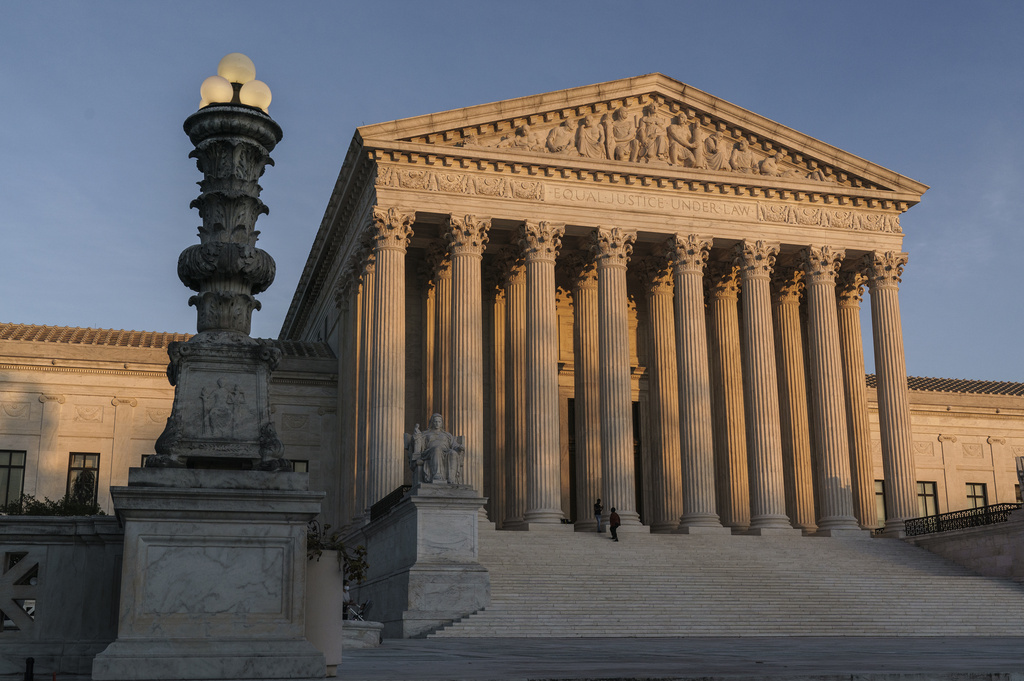Trump’s Supreme Court Picks Could Shape U.S. for Decades \ Newslooks \ Washington DC \ Mary Sidiqi \ Evening Edition \ With Donald Trump’s return to the presidency, the potential to reshape the Supreme Court is significant. Two conservative justices, Clarence Thomas and Samuel Alito, might consider retirement, opening the door for younger, Trump-nominated successors. This shift could solidify a Trump-appointed majority for decades, influencing rulings on abortion, immigration, and more.
How Trump’s Second Term Could Reshape the Supreme Court Quick Looks
- Potential Retirements: Justices Clarence Thomas and Samuel Alito, both in their mid-70s, may consider stepping down.
- Trump’s Influence: Additional appointments would strengthen conservative control, impacting cases on abortion and immigration.
- Judicial Legacy: Trump has already appointed three justices, leading to landmark decisions like overturning Roe v. Wade.
- Future Cases: The Supreme Court is poised to address challenges involving emergency abortions, medication abortion access, and DACA.
- Historical Context: Trump would be the first president since Franklin D. Roosevelt to have the chance to appoint five justices.
Deep Look
A Trump-Appointed Majority for the Long Term
Currently, two of the court’s most senior conservative justices, Clarence Thomas (76) and Samuel Alito (74), could consider stepping down. Such moves would enable Trump to nominate successors potentially three decades younger, ensuring conservative dominance into the mid-21st century or beyond. Observers note that justices often strategize their retirements to align with a president who shares their judicial philosophy. Ed Whelan, a conservative legal commentator, speculated that Thomas, who might surpass the record for longest-serving justice if he remains until 2028, could retire sooner to safeguard his legacy by having a like-minded successor confirmed.
Past Precedents and Strategic Retirements
The Impact of Trump’s First-Term Appointees
Trump’s previous appointments reshaped the court significantly, resulting in decisions that expanded gun rights, curtailed affirmative action in college admissions, and rolled back environmental regulations. Most notably, his appointees were crucial in the 2022 decision to overturn Roe v. Wade, eliminating the constitutional right to abortion.
Trump’s new term could further transform the court’s trajectory on key issues, including:
- Abortion: Although Roe v. Wade was overturned, cases involving state restrictions and medication abortions, such as those concerning mifepristone, remain active. Legal experts predict that a Trump administration could revive the Comstock Act, a 19th-century law prohibiting the mailing of abortion-related drugs, impacting access to medication abortion.
- Emergency Abortion Guidance: Trump’s administration may retract the Biden-era directive that mandates emergency abortions to save a mother’s life, potentially ending ongoing legal battles like the case out of Idaho.
Immigration and Policy Reversals
Trump’s previous travel ban targeting visitors from predominantly Muslim countries, which was upheld after revisions, could resurface. During his campaign, he hinted at reinstating such measures, signaling that immigration restrictions may once again be on the court’s docket.
The Broader Judicial Impact
If Trump manages to appoint two more justices, it would create a historic shift not seen since Franklin D. Roosevelt’s presidency. This would mark a return to a Supreme Court with a clear ideological majority shaped by a single president. Such appointments could influence rulings on a wide range of issues, from civil rights to environmental regulations and executive power.
Guardrails and Checks
Conclusion
Trump’s potential to appoint more Supreme Court justices in his second term is poised to shape American law for decades. With possible retirements on the horizon, the court’s conservative tilt could deepen, solidifying a judicial legacy that aligns with Trump’s policies and vision for the country. How these changes unfold will depend on strategic retirements, Senate confirmations, and the direction the court takes on pivotal cases that will define its future impact.







